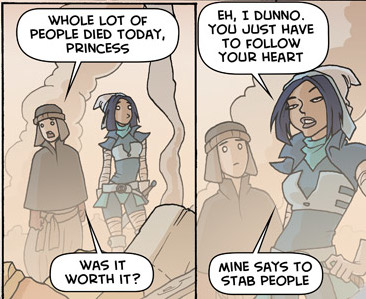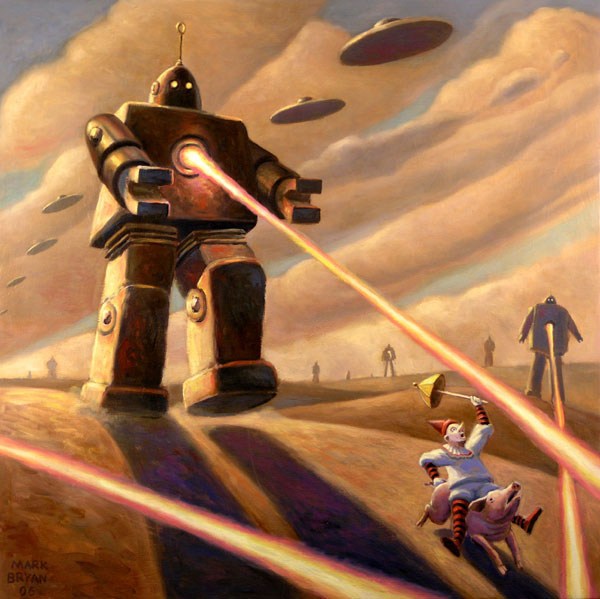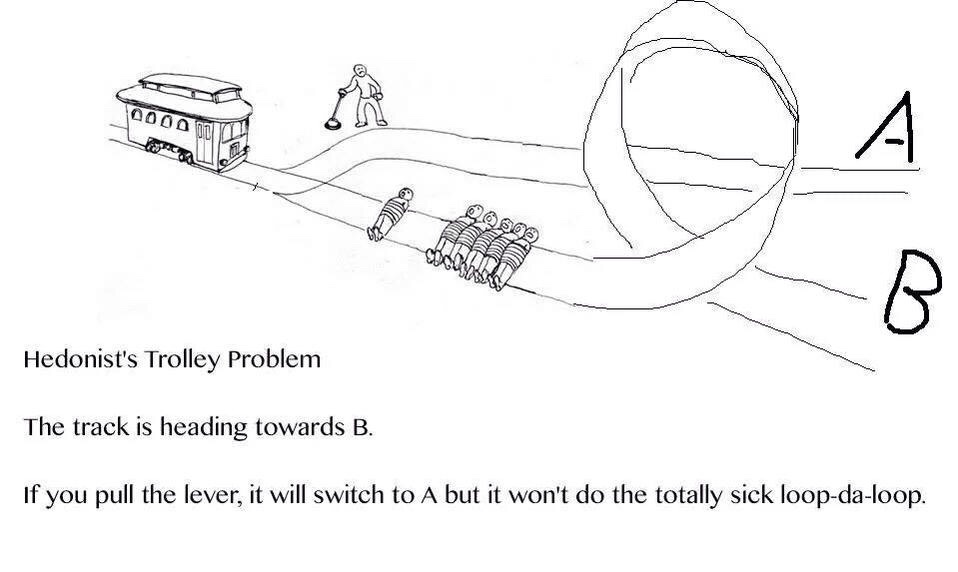[draft]
Achilles glanced up from his writing atop the Tortoise[1] and exclaimed, “Look! The Hare has caught up.”
“No,” said the Tortoise apprehensively, “that isn’t the Hare, but the Hare’s all too clever cousin, the HareLoon.”
“A real HareLoon! I’ve only ever seen them in pictures.”
“Don’t get so worked up. She is always in a hurry but I can never tell if she is coming or going.”
“Ah, but you should know the HareLoon coming and the HareLoon going are one and the same,” said the HareLoon. She then faced Achilles, “I heard that Tortoise had you write many logical steps after starting with a mere three.”
With a wan smile Achilles murmured, “We’ve moved on from that now…”
“Yes” said the Tortoise firmly. “Have you heard of Moore’s Proof of the External World? It is just as short as the three lines of Euclid:
(A) Here is a Hand.
(B) Hands are external things.
(Z) The external world exists.
Achilles said, “We are now in agreement that Z follows logically from A and B. But…”
“But only if we accept A and B, does Z follow,” the Tortoise interjected. “However, I’m skeptical that hands are real at all.”
“Whatever do you mean?” asked the HareLoon, looking rather concerned for Achilles.
“Well, I might just be dreaming that there is a Hand in front of me. Or I could have eaten something disagreeable that is making me imagine things. Or someone is playing a trick on me.” The Tortoise continued, “I need a further statement to guarantee A:
(C) I am not being fooled into thinking a Hand is here.
Achilles cringed, palm to face.
“Fair enough, and I think I know where you are going with this,” said the HareLoon. “But before we worry about the External world, have you a proof of the Internal World?”
“What do you mean: Proof of the Internal World?” asked Achilles.
The HareLoon queried, “Let me ask you first: Would you know a HareLoon if you saw one? If so, please tell me how.”
In an official sounding voice the Tortoise recited: “The chief characteristic of a HareLoon is that it appears to be a Hare at some times, and appears to be a Loon at others.”
“Excellent,” replied the HareLoon. “Would you agree that the HareLoon does not itself change when it takes on these different guises? That is: the appearance of the Loon and the appearance of the Hare are in the thoughts of the beholder.”
“I suppose… The change is in the onlooker,” agreed the Tortoise.
“Then,” continued the HareLoon,
(A’) Here is a HareLoon.
(B’) HareLoons are internal things.
(Z’) The internal world exists.
“I distinctly remember Moore talking about hands and not HareLoons,” grumbled the Tortoise.
“Perhaps, but unlike hands you cannot be fooled into thinking HareLoons exist! We exist when, without change, we can appear to be a Hare or a Loon. Since we have agreed that this change is in your head, you can’t be mistaken about us switching in appearance between Hare or Loon. Hence when you think you see a HareLoon, you do see a HareLoon!
“Very Clever!” returned the Tortoise. “But what we want is the external — not internal — world. You’ve just argued yourself into my head and out of external existence. If you are only in my thoughts, it is a quick matter of logic to say that you aren’t anywhere eles.”
“Why Tortoise, that is the nicest thing you’ve ever said to me! To think, you’ve kept me in mind and maintained my existence, all these years. I should be flattered — or flattened, like you. I would take this paper thin existence (Cogito me papyrum esse, ergo sum)[2] but I don’t think I need to any longer.
“Answer me this: Who lives in this internal world? I’m here, and so are you! We have just agreed that I exist by you thinking, Cogito Ergo Es, and this is just the same as you existing by you thinking, Cogito Ergo Sum. So if I am a figment of your imagination, then so are you.”
“I am most certainly not a figment of my own imagination! You always were Loony, using Hairy reasoning.” said the indignant Tortoise.
“I don’t want to deny my existence any more than you yours, but if, as a quick matter of logic, you exclude others from existing, it loses its sense to say that you exist, either[3]. The only other thing that could have gone wrong is B’, that HareLoons are internal things. So we now have:
(A’) Here is a HareLoon.
(B’’) HareLoons are external things.
(Z) The external world exists.
Achilles shook his head, “You should have known, Tortoise… you can be in your house, but you’re still outside. If only your cousin were here, the Mock-Turtle would say: that while Achilles skill kills and the Tortoise disorders us (what tsuris!), the HareLoon’s Hume’s heir.”
[1] Carroll, Lewis. (1895) What the Tortoise Said to Achilles. Mind 4, No. 14: 278-280.
http://fair-use.org/mind/1895/04/what-the-tortoise-said-to-achilles
[2] Bouwsma, O. K. (1949). Descartes’ evil genius. Philosophical Review 58 (2):141-151.
http://home.sandiego.edu/~baber/analytic/Bouwsma1949.pdf
[3] Wittgenstein, Ludwig (1953/2003). Philosophical Investigations: The German Text, with a Revised English Translation. Malden, Ma, Blackwell Pub.
Relevant section §398 quoted below.
http://gormendizer.co.za/wp-content/uploads/2010/06/Ludwig.Wittgenstein.-.Philosophical.Investigations.pdf
Philosophical Investigations §398
(Bold Added)
“But when I imagine something, or even actually see objects, I have got something which my neighbour has not.” — I understand you. You want to look about you and say: “At any rate only I have got THIS.” — What are these words for? They serve no purpose. — Can one not add: “There is here no question of a ‘seeing’ — and therefore none of a ‘having’ — nor of a subject, nor therefore of T either”? Might I not ask: In what sense have you got what you are talking about and saying that only you have got it? Do you possess it? You do not even see it. Must you not really say that no one has got it? And this too is clear: if as a matter of logic you exclude other people’s having something, it loses its sense to say that you have it.
But what is the thing you are speaking of? It is true I said that I knew within myself what you meant. But that meant that I knew how one thinks to conceive this object, to see it, to make one’s looking and pointing mean it. I know how one stares ahead and looks about one in this case — and the rest. I think we can say: you are talking (if, for example, you are sitting in a room) of the ‘visual room’. The ‘visual room’ is the one that has no owner. I can as little own it as I can walk about it, or look at it, or point to it. Inasmuch as it cannot be any one else’s it is not mine either. In other words, it does not belong to me because I want to use the same form of expression about it as about the material room in which I sit. The description of the latter need not mention an owner, in fact it need not have any owner. But then the visual room cannot have any owner. “For” — one might say — “it has no master, outside or in.”
Think of a picture of a landscape, an imaginary landscape with a house in it. — Someone asks “Whose house is that?” — The answer, by the way, might be “It belongs to the farmer who is sitting on the bench in front of it”. But then he cannot for example enter his house.
You’ve tossed the grin out with the cat.


